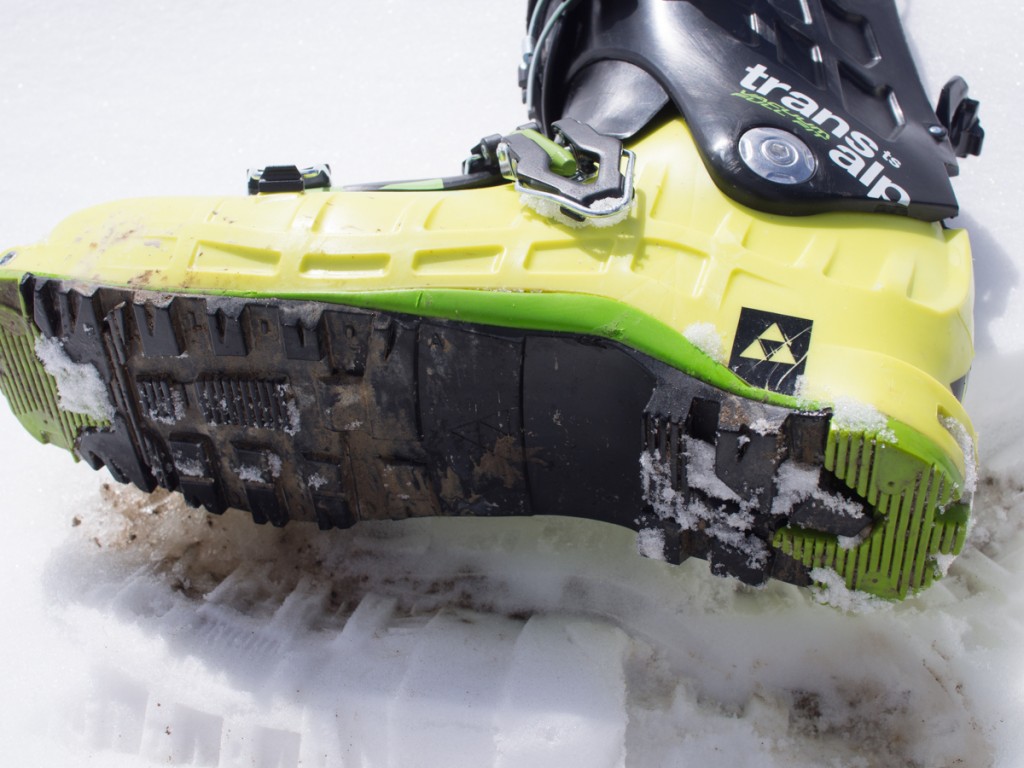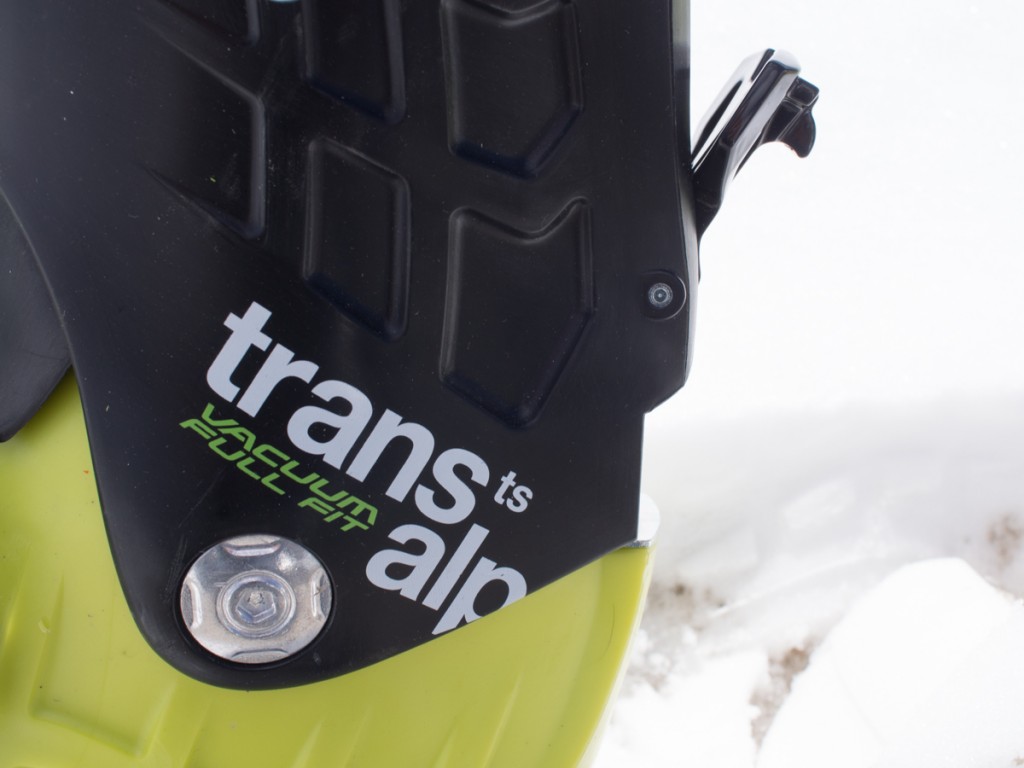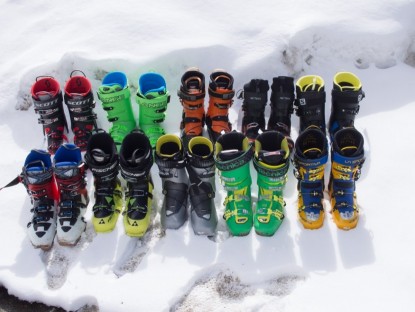Fischer Transalp Vacuum TS Review
Our Verdict
Our Analysis and Test Results
In 2018, all-around, all-purpose AT ski boots are nothing special. Every company has one, it seems, and there's something for every brand loyalty and foot shape. You can go heavier, lighter, or aim right down the middle of the pack. In most ways, the Transalp Vacuum TS from Fischer shoots right down this middle road. It tours well, its weight is about average, and it skis reasonably similar the alpine boots it emulates. What sets it apart is the fit and comfort allowances. Unique to Fischer, the entire shell is heat moldable. With this technology, even the weirdest of feet have room to adapt. It takes some work, but this is the most adaptable fitting boot in our test. Straight out of the box, like we used it, the fit is neutral and the function is tuned to most human powered and side country users.
Performance Comparison
Up-hill Performance
With tongue construction and a less-binding bar-less ski/walk mode switch, we expected the Transalp to tour well. There seem to be three major classes of boots, as it pertains to ankle mobility and therefore up-hill performance. At one extreme are the two-piece, overlap-constructed boots like the Lange XT FreeTour 130 and the Tecnica Zero G Guide. These are essentially alpine boots with a walk mode and "tech fittings". We don't expect much, in terms of ankle mobility from these. In the middle are "three piece" or tongue boots, with a bar-and-pin ski/walk mode lock. In these boots the lower boot (scaffo, in Italian) and cuff are locked together with a metal bar and pin that slides into a hole in that metal bar. When unlocked the metal bar slides back and forth, adding friction but allowing movement. At the other end of the spectrum are the boots that are constructed in three piece or tongue style, but have a lock mode that doesn't require a metal bar.
These provide the greatest touring motion, as there isn't the friction of the metal bar sliding through the cuff housing with each step. Our Top Pick for touring mobility, the Scarpa Alien RS is constructed this way, as is the Arc'teryx Procline Carbon Lite and the Editors' Choice Dynafit TLT 7. All of these lightweight boots tour better than any other in our test. The ski/walk mode of the Transalp is also one that features no metal bar and associated friction. Because of this, we expected good range and freedom of motion in the cuff. Unfortunately, due to pivot friction and flexing plastic (the scaffo of the Transalp is taller than most, going up past the users ankle bone and requiring flexion with every step), the Transalp Vacuum cuff mobility is more like the metal-bar-constructed boots than like the ultralight offerings.
Weight
At seven pounds four ounces, for the pair, the Transalp is just lighter than all the overlap boots we tested, and right in the mix with the average boots we reviewed. It is almost twice the weight of the Backland Carbon, but skis way better. Overall, the weight is nothing notable, coming in real similar, if not a little lighter than our Best Buy Dynafit Radical Boot.
Downhill Performance
We were pleasantly surprised with the downhill performance of the Transalp Vacuum. The stiffness is tailored to a modern, centered stance, with good support to the sides and rear for when the skier gets out of balance and an even, progressive flex to the front. It seems that that progressive forward flex is what separates the best skiing AT boots from the lighter offerings. The TLT 7 and La Sportiva Spectre 2.0 are plenty stiff in forward flex, but accomplish that in a way that leaves the user feeling like they bend their ankles easily forward until they hit a sort of wall. The Transalp, along with the Salomon S/Lab MTN and the overlap boots, offer a better tuned, and more useful, progressive forward flex.
Comfort and Fit
For the best comparison, we tested every boot "straight out of the box". Our lead test editor is a "glutton for punishment" and took chances with blisters and bruises with this rather unorthodox tactic. We test all our gear, extensively, in the environment for which it was designed. While other reviews may use AT ski boots only at the resort, we used them all in the backcountry, for multiple big days. Our lead test editor is a backcountry ski guide logging hundreds of thousands of vertical feet each year. In short, we took chances with our feet to test these boots. Only a few were truly usable for extended periods this way.
Notably, the Transalp was usable for our lead testers fairly neutral, if a little bony, feet. This is a good thing, and is an attribute shared by the TLT 7, the Scott Cosmos III, the Dynafit Radical, and the Lange XT. On top of that, the Fischer offers an industry-leading moldable shell. All AT boots now come with liners that can be heat molded to the users foot. For some, this is enough. For others, some "shell work" must be done. All boots can be punched and molded, but it is far easier, with greater room to work, in the Transalp. While we didn't employ this feature, we are confident that the Transalp Vacuum can be adapted to fit nearly every foot out there.
Warmth
In cold, high altitude, windy San Juan ski touring, we had no problems with the warmth of the Transalp. The thick shell plastic and standard liner thickness combine to make for a well-insulating boot. The warmth is similar to that in the Lange XT, the Tecnica Zero G, the Scott Cosmos III, and the Dynafit Radical. The Transalp boots are warmer than the Atomic Backland, the Dynafit TLT 7, and the Arc'teryx Procline Carbon Lite.
Ease of Use
For the most part, the Transalp is average in ease of use. As compared to the category leading, and Editors' Choice Dynafit TLT 7, these seem complicated and fiddly. However, as compared to the other average products, the three buckles, one power strap, and positive ski/walk mode lock is simple and clean. For high-tempo, high volume ski touring like much of our team prefers, the one-move transition of the TLT 7 is of great value. For all other "one-and-done" ski touring and ski mountaineering, one will hardly notice the extra steps required by the Transalp and other multiple buckled boots.
Best Applications
These are excellent all-around AT ski boots, especially for those with abnormal foot and fit issues.
Value
After the uber specialized Arc'teryx Procline Carbon, and tied with the Editors' Choice Dynafit TLT 7, the Transalp is the second most expensive boot in our test. For this, you get solid performance and ease of fitting. If your feet are tough to please, you will likely spend hundreds of dollars in fitting less expensive boots, therefore narrowing or eliminating the cost gap of the Transalp. In short, if you need shell work done, the Transalp Vacuum is an excellent value.
Conclusion
We like it when clear and inherent attributes truly set apart a product. While we didn't take advantage of the heat moldable shell, this is a feature that only Fischer offers in AT ski boots. For this alone, the Transalp Vacuum is worth a look. Beyond that, the performance is solid.








